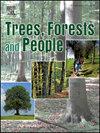Assessing wildfire susceptibility in Iran: Leveraging machine learning for geospatial analysis of climatic and anthropogenic factors
IF 2.7
Q1 FORESTRY
引用次数: 0
Abstract
This study investigates the multifaceted factors influencing wildfire risk in Iran, focusing on the interplay between climatic conditions and human activities. Utilizing advanced remote sensing, geospatial information system (GIS) processing techniques such as cloud computing, and machine learning algorithms, this research analyzed the impact of climatic parameters, topographic features, and human-related factors on wildfire susceptibility assessment and prediction in Iran. Multiple scenarios were developed for this purpose based on the data sampling strategy. The findings revealed that climatic elements such as soil moisture, temperature, and humidity significantly contribute to wildfire susceptibility, while human activities—particularly population density and proximity to powerlines—also played a crucial role. Furthermore, the seasonal impact of each parameter was separately assessed during warm and cold seasons. The results indicated that human-related factors, rather than climatic variables, had a more prominent influence during the seasonal analyses. This research provided new insights into wildfire dynamics in Iran by generating high-resolution wildfire susceptibility maps using advanced machine learning classifiers. The generated maps identified high-risk areas, particularly in the central Zagros region, the northeastern Hyrcanian Forest, and the northern Arasbaran forest, highlighting the urgent need for effective fire management strategies.
求助全文
约1分钟内获得全文
求助全文
来源期刊

Trees, Forests and People
Economics, Econometrics and Finance-Economics, Econometrics and Finance (miscellaneous)
CiteScore
4.30
自引率
7.40%
发文量
172
审稿时长
56 days
 求助内容:
求助内容: 应助结果提醒方式:
应助结果提醒方式:


